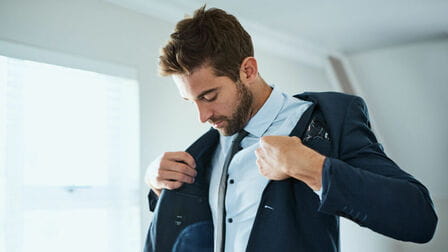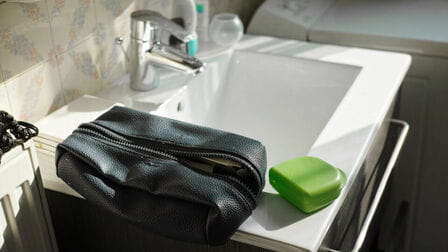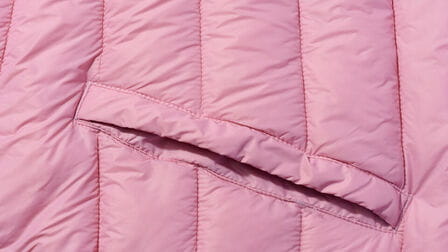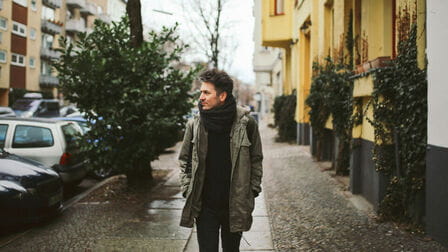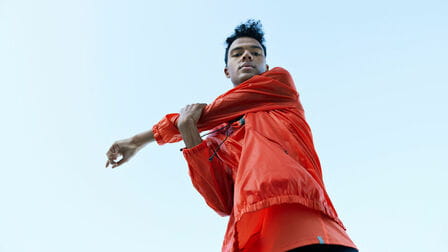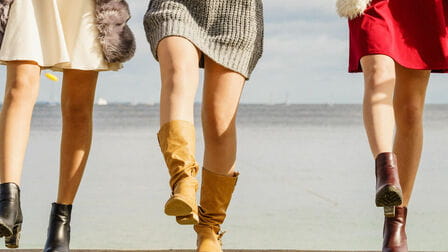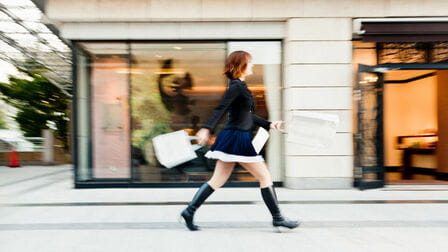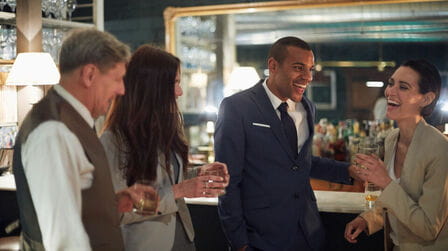The 1980s were a decade of bold experimentation, economic boom, and cultural upheaval. It was reflected in every facet of life, especially in the realm of fashion. 80s fashion wasn't just about clothes; it was a statement, a rebellion, and a celebration of individuality. But amidst the seemingly chaotic mix of neon colors, ripped denim, and gravity-defying hairstyles, there were some unwritten rules that governed the sartorial landscape of the era.
Bigger is Better
Shoulder Pads and Sky-High Hair
The 80s embraced maximalism with open arms. Shoulder pads reached linebacker proportions, transforming blazers and dresses into power statements. Hair was teased to impossible heights, often sculpted into gravity-defying mohawks or sprayed into stiff, geometric shapes.
Oversize shoulder pads gave blazers and coats an aggressive, almost American football player silhouette. Both men and women sported coats, blazers and dresses with padded shoulders, creating an imposing triangular shape. For women, the bigger the better - shoulders were built up to almost comical proportions.
Hairstyles were equally dramatic, with backcombing and hairspray used liberally to create larger-than-life dos. Popular styles included the poodle perm, a tightly permed, frizzy poof that surrounded the whole head; gravity-defying mohawks and spikes that seemed to stand straight up, defying physics; and geometric wedge cuts that involved stiff, sprayed sections jutting out at sharp angles.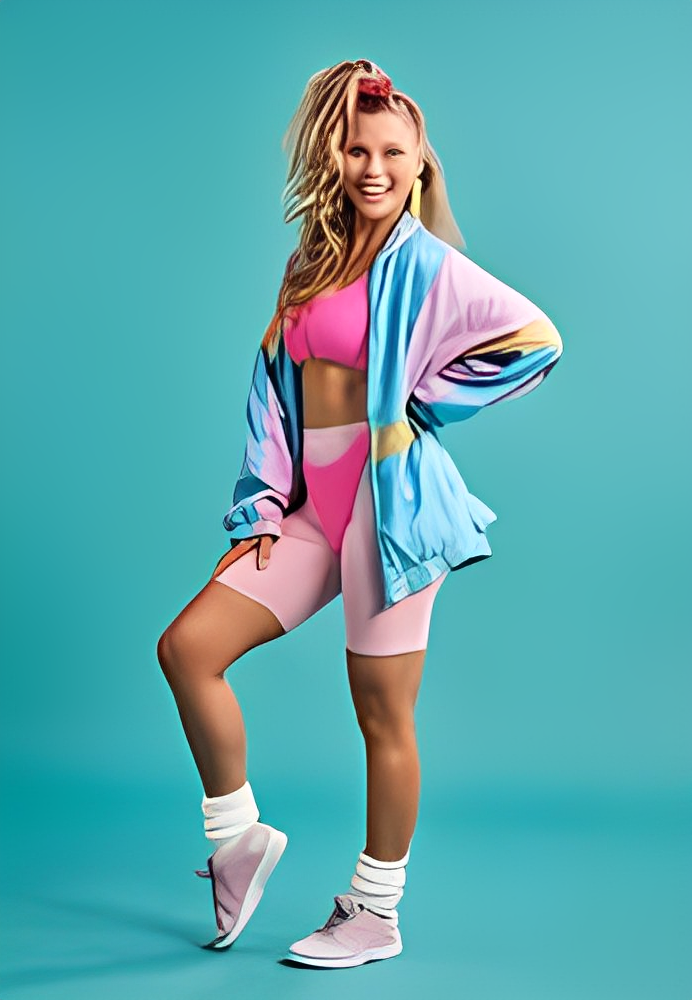
Bold Makeup and Chunky Jewelry
Jewelry was chunky and eye-catching, with oversized plastic bangles and statement necklaces vying for attention. Even makeup followed suit, with dramatic eyeshadow and blush creating a bold, theatrical look.
In tandem with the bigger-is-better mantra, jewelry trended chunky and attention-grabbing. Multiple plastic bangle bracelets lined arms with their saturated colors and clacking sounds. Long, dangly earrings brushed shoulders, while chunky chained necklaces in gold and silver hues made a statement.
Makeup aesthetics followed suit - shadow, liner and mascara were applied liberally around eyes, with blue and purple shadow in particular creating a bold, almost sci-fi look on many women. Cheeks were brushed heavily with bright pink blush for a dramatic flush. The overall effect was powerful and eye-catching.
Breaking Rules and Blurring Lines
Gender norms were playfully challenged in 80s fashion. Women raided the men's department, rocking oversized blazers and boyfriend jeans, while men embraced flamboyant prints and neon colors.
The 80s saw more fluidity between menswear and womenswear, with both sexes experimenting across boundaries. Oversized blazers with strong shoulders were adopted by women for a bold power look. Boyfriend jeans with a loose, baggy fit became popular among the female crowd.
Meanwhile, men embraced more vivid colors and prints - brighter hues like hot pink, turquoise and lime green started appearing in shirts and accessories for men. Hawaiian shirts with vibrant all-over prints were adopted as edgy statement pieces. Unisex accessories like fanny packs, neon Wayfarer sunglasses and oversize plastic jewelry were shared by both genders.
Color Explosion
Neons and Vivid Hues
Neon hues like hot pink, electric blue, and lime green dominated the scene. Bold geometric prints and clashing patterns were embraced with gusto.
No color was too bright or intense for the 80s aesthetic. Highlighter-hued neons were ubiquitous in clothing and accessories for both sexes. Miniskirts and leggings shone in hot pink, jackets and blazers popped in lime green, chunky jewelry and bags came in every shade of the rainbow. These vivid tones were often paired and layered together for eye-popping effect.
Prints tended toward the graphic and eclectic - abstract shapes, blurred painterly motifs and optical illusions. Black and white op art prints surged back into vogue. Different patterns were mixed and matched with abandon. The clash was deliberate and embodied the experimental, risk-taking attitude.
Classic Black and White Palette
Black and white, the timeless duo, took a backseat to the vibrant rainbow that unfolded on the streets.
While color exploded all around them, black and white basics didn’t disappear - they grounded the eye-popping neons and prints. A black leather moto jacket over a hot pink dress kept the look edgy. White button-downs and tees provided blank canvases for loud accessories.
Crisp black and white patterns like houndstooth, polka dots and bold stripes held their own against neon geometrics with their graphic impact. Tuxedo-style looks, with strong black and white contrast, had a neo-New Wave vibe when paired with chunky angular jewelry and edgy hair.
Material Matters
Rise of Synthetics
Polyester reigned supreme, offering wrinkle-free convenience and bold, saturated colors. Lycra, the stretchy wonder material, hugged curves and facilitated the active lifestyle that became increasingly popular.
Synthetic fabrics came into their own in the 80s, led by polyester. This petroleum-based material held color brilliantly, lent itself well to eye-catching prints and was wrinkle-resistant. Stretchy Lycra spandex also gained popularity, especially for activewear like leotards, leggings and leg warmers.
These fabrics perfectly matched the new decade’s aesthetic - vivid, convenient and bold. They draped well or hugged curves, showing off the fitness-conscious physique that was increasingly en vogue. Paired with the era’s brash prints and neon colors, synthetics were the perfect canvas for self-expression.
Denim Classics Evolve
Denim, of course, remained a staple, evolving from the hippie-inspired bell-bottoms to the ripped and acid-washed styles that defined the decade.
Denim never went of style - in fact, it was more ubiquitous than ever in the 80s. But the fabrics and silhouettes evolved significantly from the previous decades. Flared bell-bottoms were eschewed for closer-fitting straight legs, boot cuts or skinny cigarette shapes. Light blue washes fell by the wayside as darker indigo dyes took over.
The most notable denim development was acid washing and strategic ripped holes becoming desirable decorative features. Pale abrasions, fraying and shreds along thighs and knees were either built into the fabric or created through manual distressing. These gave a grungy, rebellious look that perfectly aligned with punk and grunge influences filtering into mainstream fashion.
From Streetwear to Stardom
Athleticwear Inspiration
Tracksuits became acceptable street attire, sneakers were paired with dresses, and activewear inspired bold new silhouettes. Hip-hop culture had a major influence, with baggy jeans, oversized tees, and bucket hats becoming must-have items.
The fitness craze sparked by Jane Fonda and aerobics inspired a surge of athletic street style in the 80s. Sneakers like Converse high tops or Reebok hightops were acceptable casual wear paired with miniskirts or ripped jeans. Nylon tracksuits with contrast colored piping emerged from the gym as iconic streetwear.
Leotards, leggings and legwarmers were adopted even by those who never set foot in an exercise studio - Madonna’s fingerless gloves and lace leggings combo sparked a major fashion moment. Off-the-shoulder unitards and bodysuits also jumped from the dance studio to the streets.
Blurring High Fashion and Casualwear
The 80s saw a blurring of lines between sportswear and everyday fashion.
High fashion also took inspiration from the new athletic leanings of mainstream fashion. Norma Kamali’s sweatshirt dresses were merely upscale, shoulder-padded takes on a basic sweatshirt. In 1986, Chanel showed its first sneakers on the Paris runway. Women started wearing menswear-inspired oversize blazers as everyday jackets rather than just as business suits.
The boundaries between fancy and casual blurred as sportswear and street style impacted high fashion. Everything was up for grabs - it was about creating individual, eclectic looks mixing designer pieces with thrift store finds.
Accessorize with Attitude
Bigger and Bolder Jewelry
Statement earrings dangled down to shoulders, chunky plastic bracelets adorned wrists, and leg warmers added a pop of color and texture. Sunglasses, often oversized and mirrored, became an essential part of any outfit.
Jewelry followed the mantra of bigger and bolder in the 80s. Shoulder-grazing earrings swung wildly with every movement, sometimes even synchronized via attached chains. Armfuls of plastic bangles clacked together loudly. Neon hued leg warmers kept calves cozy while adding a fun pop of color peeking out from beneath skirts or dresses.
Sunglasses got bigger and flashier - oversize geometric frames and reflective, mirrored lenses became the hottest shades of the era. These made a bold impact whether as sun protection or worn perched on head when indoors.
Fanny Packs and Functionality
And let's not forget the iconic fanny pack, a practical and stylish way to carry essentials hands-free.
Fanny packs epitomized function meets fashion in the 80s. These over-the-shoulder belt bags let wearers keep essentials like cash, keys and compacts on their person without carrying a purse. Their practicality dovetailed beautifully with the active lifestyle mantra that pervaded the era.
Yet fanny packs transcended their utilitarian roots with their trends toward bright neons, crispy nylons and sporting-inspired trims. They matched all the bold accessories and clothing of the times with their vibrant pops of color and sporty vibe. Form, function and fashion intersected beautifully with this iconic 80s accessory.
Don't Be Afraid to Stand Out
There were no hard and fast rules, just a sense of playful experimentation and a willingness to push boundaries. Whether you were a punk rocker sporting ripped leather and safety pins, a preppy sporting pastel polos and boat shoes, or a neon-clad party girl in a miniskirt and leg warmers, the 80s celebrated self-expression in all its vibrant glory.
Subcultures like punk, goth, preppy and hip hop all influenced wider trends, bringing their distinct aesthetics into the cultural mosaic of 80s style. Mohawks, Doc Martens and tartan plaids started defining eras beyond their original contexts. Individual niches sparked inspiration across groups in this sharing of personal style.
At its core, 80s fashion was about unabashed self-expression. There was no unified trend - rather an explosion of subgroups and personal flair mixing, mingling and inspring innovation. Crimped New Wavers in kinetic fabrics crossed paths with punks in leather and spikes on city streets. Power-dressed career women with mega shoulder pads shared sidewalks with breakdancers in baggy tracksuits and sneakers.
The result was an glorious collision of diversity in style and people coming together to rejoice in redefining norms, breaking rules and having fun while doing it. 80s fashion was about celebrating what set you apart, not fitting in - paving the way for the self-confidence and individuality that remains influential still today.
Conclusion
The 80s may be over, but its fashion legacy lives on. From the power suits of Wall Street to the ripped denim of rock stars, the era's sartorial choices continue to inspire and influence contemporary trends. The decade's bold celebration of individuality, diversity and self-expression gave people the freedom to innovate - leading to some of history’s most distinctive leaps in style that still feel fresh even decades later. 80s fashion wasn't governed by notes from the runway or dictums from editors - rather, it took those rules and joyfully threw them out the window, paving the way for future fashion revolutions.
